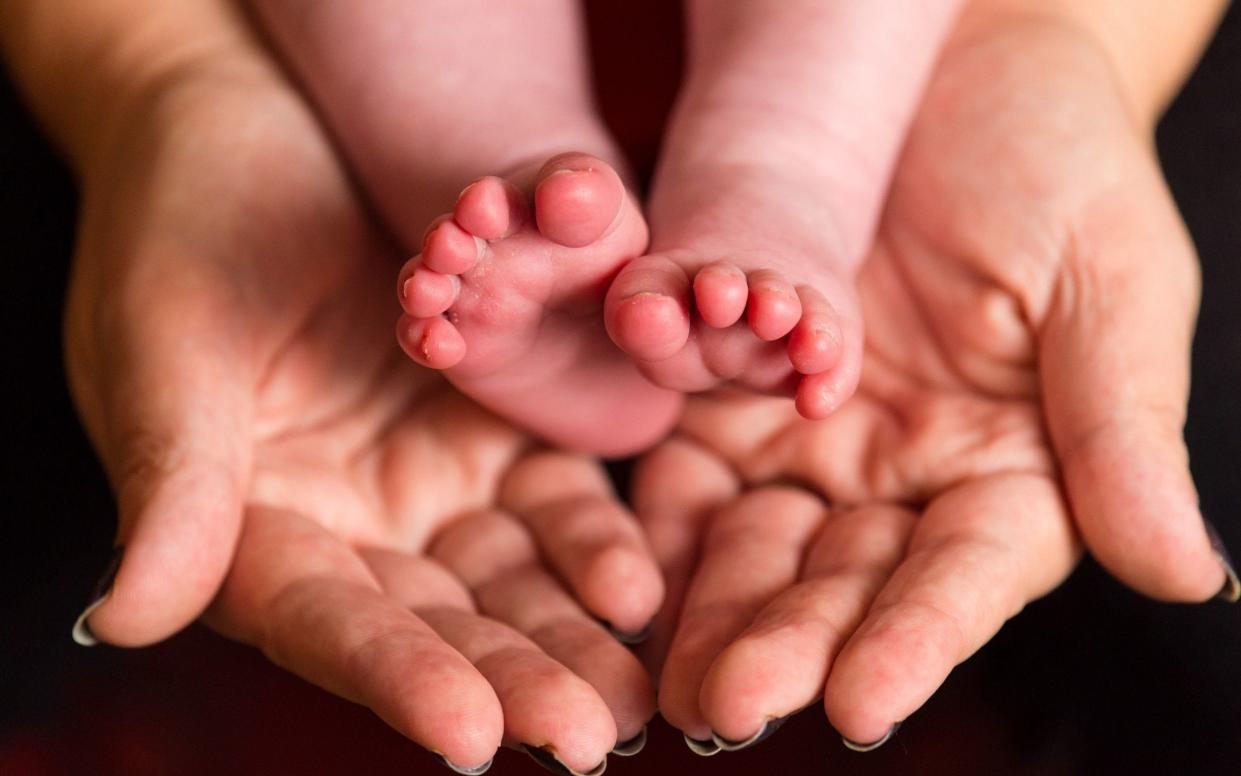More babies born out of wedlock than into married families for first time on record

More babies were born out of wedlock in 2021 than into married families for the first time on record, official data show.
Figures from the Office for National Statistics (ONS) show that there were 624,828 live births in England and Wales last year with slightly more males than females, as is the norm.
However, more than 320,000 were outside a marriage or civil partnership, compared to around 304,000 in marriage.
The data show that 51.3 per cent of live births were not to married couples – the first time it has been a majority since records started in 1845.
The proportion of births out of wedlock was less than one in 10 until 1978, topped a quarter in 1988 and has been 40 per cent or higher since the turn of the millennium.
It is symptomatic of a changing society as people get married later, have fewer children and have children at an older age.
Over a 20-year period since 1999, the average age at marriage for men went up from 31.6 to 34.3 years, ONS data show. For women, it went up from 29.4 to 32.3.
Dr James Tucker, the head of health analysis at the ONS, said: “The number of live births registered outside marriage or civil partnership exceeded the number of births registered within marriage for the first time in 2021.
“This follows the long-term trend of declining marriage rates and increasing numbers of co-habiting couples seen in recent decades. However, caution should be taken in interpreting the numbers as we don’t yet know the full impact of the pandemic on marriage and civil partnership statistics.”
Meanwhile, younger people are having fewer children, with figures revealing that there were around a quarter of a million births to women under 30 last year, compared to 372,000 to over-30s.
The number of children born to women younger than 30 is now less than half of what it was 50 years ago, and the average age of a mother has been above 30 since 2013.
Teenage mothers are also now at a new record low, with just 8.4 births per 1,000 people. This has been steadily decreasing since its peak of 50 in the early 70s.
But the fertility rate has also dropped to a record low for women in their early 20s, at just 43.2 per 1,000 in 2021. The birth rate for people in their late 20s appears to have stabilised, at 84.6 births per 1,000 people.
Meanwhile, births to over-30s remain high, with the early 30s now the most common age range to have a child.
In 2021, there were 16.2 births per 1,000 for over-40s, making a middle-aged mother twice as common as a teenage mother in their respective age groups.
ONS data also published on Tuesday show that roughly one in four births in England and Wales were to a mother who was not born in Britain.
These second-generation immigrants represent families from across the globe, with Pakistan the most common country of origin for fathers and Romania the most common for mothers.
Last year saw Albania move into the top 10 for the most common countries of origin of non-British born parents for both mothers and fathers for the first time. It is now the eighth most common foreign nation for fathers and the tenth for mothers.
In 2012, Albania was 41st for mothers and 36th for fathers, representing a startling increase in births to Albanian families over the last decade.
It comes as it was reported earlier this week that four in 10 Channel migrants are from the peaceful country, where there has not been a conflict for a quarter of a century.

 Yahoo News
Yahoo News 
